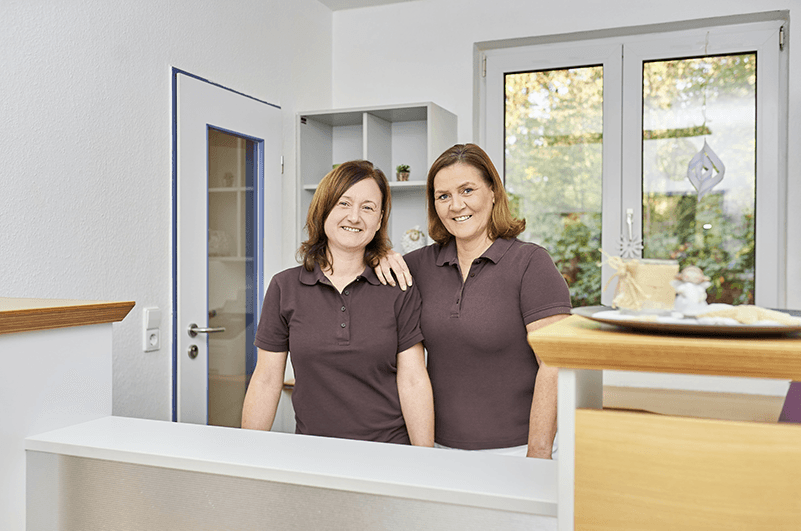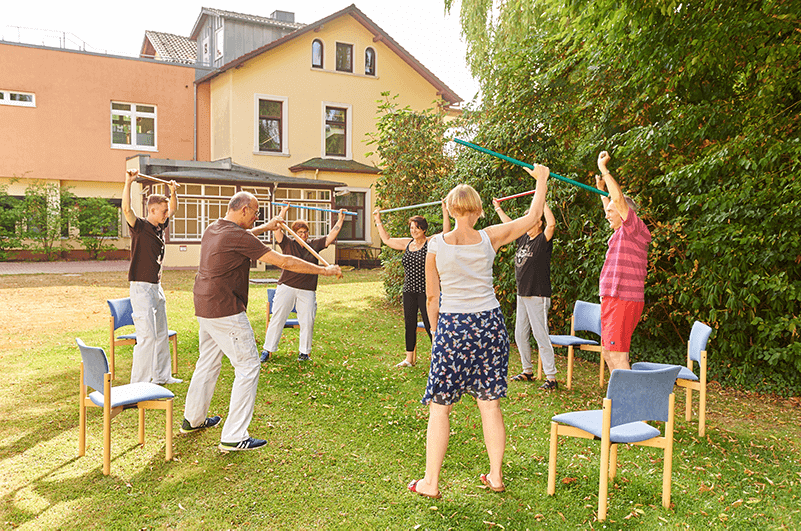The most common shoulder procedures we perform in-house are implantations of total shoulder endoprostheses and arthroscopies (e.g., rotator cuff sutures or bursectomies). Depending on which surgery is involved, the follow-up treatment also varies.
In general, the treatment of the respective shoulder starts from the first day after the surgery. Depending on the surgery, passive, assistive, or even already, an active movement of the shoulder and the surrounding joints takes place. Accompanying physiotherapy by our therapists is also using the shoulder mobility chair (if prescribed), which you can use independently several times daily. Besides, you will receive an exercise program for independent training, which you can also continue at home.
What Can You Expect as a Patient with a Planned Shoulder Surgery?
Other Support Options
In some cases, a shoulder mobility chair can also be prescribed for use at home. You can borrow one from a medical supply store and have it delivered to your home, provided that the attending ward physician has ordered it and the health insurer has approved it. The device remains with you for approximately 2-6 weeks and is individually adjusted and explained by a staff member from the medical supply store at the beginning.
If immobilization of the arm has been prescribed (e.g., after shoulder arthroscopy with rotator cuff suture), you will receive a Gilchrist immediately after the surgery. This shoulder orthosis aims to prevent active movements in the shoulder and allow movement only under a therapist’s supervision. Usually, you will wear the Gilchrist for about 4-6 weeks following surgery, after which you may begin to move your shoulder again actively. The therapist will explain when and how to wear the Gilchrist. You will also receive information on how to do the daily routine (e.g., getting dressed or personal hygiene) despite movement restrictions.
In patients with total shoulder arthroplasty, the procedure is more extensive than a minor arthroscopy. For this reason, you will also be prescribed manual lymphatic drainage in such cases to improve drainage and better remove any bruising that may have occurred.
What Follows After the Hospital Stay?
After the hospital stay, which usually lasts only a few days, it is important to continue physiotherapy for the shoulder. If you have free range of motion, you will continue to receive targeted exercises to strengthen the shoulder muscles and stabilize the shoulder joint. Beyond that, any pain-related movement deficits will be practiced and improved.
If you have movement limitations, you will undergo passive movement and are instructed in exercises for adjacent extremities and joints. Once the limitation has been lifted, you will receive instructions for active movement and targeted rehabilitation training for the muscles and range of motion. Patients with rotator cuff sutures can choose between outpatient and inpatient rehabilitation after 6 weeks, i.e., after the movement restrictions have been lifted.
Physiotherapy for the Shoulder at a Glance
Therapy for shoulder patients who have undergone surgery is carried out according to a set standard but without losing sight of the patient’s individuality.
From preventive to rehabilitative – we offer our shoulder patients a comprehensive range of physiotherapy services:
- Shoulder prostheses
- Entrapment syndrome
- Suture of the shoulder muscles
- Shoulder stiffness
- Physiotherapy – individually adjusted to the particular clinical picture
- PNF (proprioceptive neuromuscular facilitation)
- Therapy, according to Brügger
- Manual therapy, according to Cyriax and Maitland
- Training therapy
- Apparative techniques (e.g., shoulder movement splint after shoulder surgery)
- Massage (Marnitz therapy, reflexology, acupressure, etc.)
- Lymphatic drainage
- Thermal therapy, cryotherapy
- Electrotherapy
- Elastik therapeutic tape


